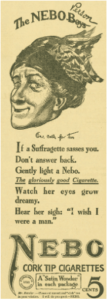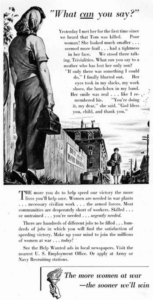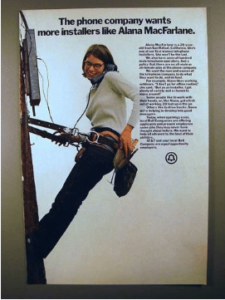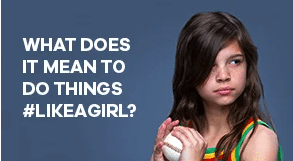March 8th marks the start of International Women’s Week, so we’re looking at the brand campaigns that honor or empower women…and perhaps a little of both. As we’ve looked back to the beginning of advertising as we know it today, we’ve also found a couple of campaigns which do the exact opposite. We’ve included them here to show just how far we’ve trodden on our path to equality.
Nebo Cigarettes – 1912

In the UK, the women’s suffrage movement gained traction during the late nineteenth and early twentieth centuries, and advertisers took advantage of the zeitgeist in their campaigns. While this ad clearly targets men, it also targets suffragettes (and therefore other strong women) themselves by daring them to smoke, something that was only just becoming socially acceptable for women.
Women in War Jobs

The Second World War provided many job opportunities for women that may not have otherwise been available. In the US, one of the most successful advertising campaigns ever – in terms of conversion, at least – saw two million women join the workforce in an effort to support the nation’s economy. While this was somewhat of a necessity rather than stemming from a desire for men and women to be equal, it did mean that working women lost their stigma and encouraged more women to work even after the war was over.
Virginia Slims – 1968

From daring rebellious women to smoke at the beginning of the century, we’d apparently come a long way by the sixties when women were given their own cigarettes – Virginia Slims by Phillip Morris. While the theme of women’s liberation and the black and white comparison to the plight of women fifty years earlier struck a chord at the time and cigarette sales rocketed, it’s certainly outdated by modern standards.
AT&T – 1972

Kudos to AT&T, who ran an advertising campaign at the beginning of the seventies in direct contrast to the typical ads that targeted women. Rather than being patronising or sexist, AT&T countered the stereotype by featuring one of the company’s first female phone installers in their recruitment ads.
Nike – 1995
Nike celebrated women in sports with a powerful prime-time commercial featuring young girls talking about how the benefits of activity go way beyond winning or losing – a first in sports advertising. Nike spokeswoman, Vizhier Corpus, said, “Our message, which is directed to parents, is that sport is no less valuable to girls than to boys. If you are a parent interested in raising a girl who is physically and emotionally strong, then look to sports as a means to that end.” This campaign resonated particularly well with older women who were never given the opportunity to play sports as children, and it was generally well-received by women everywhere.
Always #LikeAGirl – 2014

The feminine hygiene brand Always is a great example of how to get advertising to women right. Its groundbreaking “Like A Girl” campaign aimed to build confidence in girls by looking at what playing “like a girl” really means. Following that, Always launched the “Keep Going” campaign to encourage girls and women to tackle the fear of failure by using their mistakes to fuel ambition, confidence, and success. Always have now launched a social initiative called #EndPeriodPoverty, donating products and a portion of sales to schools to help students get access to the period products they need to stay in school and stay confident.
Brands like Always succeed because not only do they speak to women in a very real way, but they also use advertising to reshape our perceptions of what women we can achieve.
Why Can’t Girls Code – 2016
Girls Who Code is an international non-profit striving to close the gender gap in technology. As part of an effort to change the image of what a programmer looks like and overcome negative gender bias, they released “Why Can’t Girls Code?” videos, which feature girls saying things like, “I’ve tried to get into coding, but my cleavage is just so distracting,” and, “It’s super-hard to code when every month your insides are ripped from your body in slow motion.” All of the ads ends with, “Girls do code. Every other theory is ridiculous.”
Royal Air Force – 2019
Over 100 years after the first advert mentioned in this article, brands are now subverting stereotypical commercials aimed at women. This commercial by the UK’s Royal Air Force uses voiceovers from female beauty ads over military action, driving the message home that women are defined not by what they look like or how they should act, but by their actions themselves.
For detailed information and advice on all things brand, check out our brand guide.


